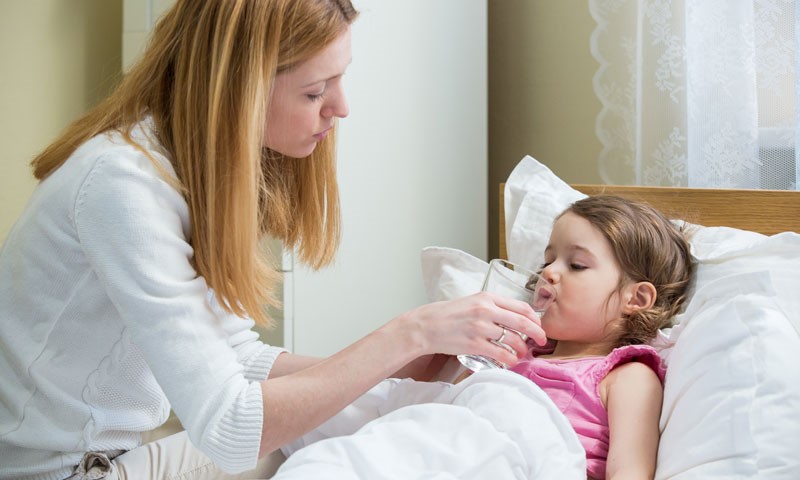About 10% of women around the world suffer from PCOD. While it’s not life-threatening, it can cause many unwanted side effects. We have created a comprehensive guide on everything you need to know about PCOD. With all this information, you can make more informed decisions about your body and choose early interventions where necessary.
So, let’s get started.
What is PCOD?
PCOD (Polycystic Ovarian Disease) is a health condition caused by a hormonal imbalance in our bodies. For a normal menstrual cycle, the body releases ready-to-be-fertilized eggs from each ovary alternatively every month. However, in PCOD, the eggs released are immature, and this can cause them to develop into cysts. Cysts are little sacs filled with fluid. These cysts can cause ovaries to swell up and increase in size. Moreover, normal ovaries release small amounts of androgen. These are male sex hormones. However, in PCOD, ovaries start producing large quantities of androgens which can lead to several unwanted side effects like hair growth, irregular periods, etc.
What are the causes of PCOD?
Currently, we don’t know the exact cause of PCOD. However, certain risk factors seem to increase the chances of getting the disease:
- Excessive insulin production: Increased insulin levels in the body have been linked to higher androgen production. Since androgens are one of the main effectors of PCOD, increased insulin levels can trigger the disease.
- Excessive androgen production: Higher levels of androgen production by the ovaries cause the disease’s characteristic symptoms, like acne and hair growth.
- Low-grade inflammation: Recent studies have identified low-grade inflammation as another possible risk factor. Women with this level of inflammation were found to have increased levels of androgens in their bodies. It can also lead to other atherosclerotic problems and heart attacks.
- Genetic predisposition: Women sometimes have genetic markers that make them more likely to get the disease. Genetics seems to play a central role in the development of PCOD.
What are the symptoms of PCOD?
PCOS and PCOD have similar symptoms. They include:
- Irregularities in menstruation (oligomenorrhea)
- Missing a period (amenorrhea)
- Heavy or excessive menstrual bleeding (menorrhagia)
- Increased hair growth around the body (areas like the face, back, belly, and chest are affected)
- Increased bursts of acne on the face and the torso region.
- Weight gain
- Loss of hair on the scalp (hair thinning)
- Darkened patches of skin around the neck, the groin, and the underside of the breasts
What are the complications associated with PCOD?
People who have PCOD can sometimes suffer from medical complications. They are as follows:
- Unscheduled uterine bleeding
- Infertility
- Type 2 diabetes mellitus
- Premature birth or preterm labor
- Different metabolic disorders (they are caused by the increased concentration of insulin in the body)
- Non-alcoholic steatohepatitis – this happens when fat build-up causes inflammation and subsequent damage to the liver
- Anxiety and depression
- Sleep apnea
- A thickened uterine lining can also cause endometrial cancer
- Miscarriage
What are the differences between PCOS and PCOD?
PCOS and PCOD are similar conditions. Therefore, it’s important to understand the differences between them.
Based on prevalence:
- PCOD is more common and affects about 10% of the women in this world.
- PCOS is far less common and only affects around 0.2% to 2.5% of women in the world.
Based on severity:
- PCOD is less severe, where ovaries release immature eggs.
- PCOS is far more severe, and the ovaries may stop releasing eggs altogether.
Based on fertility:
- Women with PCOD can still get pregnant with a little help from hormonal.
- PCOS is far more severe, and the ovaries may stop releasing eggs altogether.
How to treat PCOD?
Certain lifestyle changes can help you better manage the disease:
- Maintaining a healthy body weight: This helps to reduce the risk of atherosclerotic complications. Reduced fats and cholesterol levels don’t clog up the blood vessels and further reduce the likelihood of reproductive problems like ectopic pregnancy and miscarriage.
- Limiting carbohydrate consumption: Because high insulin levels trigger PCOD, a low-carb diet can help. Fewer carbs in our system mean that we would need less insulin, which reduces insulin levels throughout the body, resulting in lower levels of androgens and reduced disease severity.
- Getting regular exercise and being active: Regular exercise helps control blood sugar levels. This effect synergizes with a reduced intake of carbs to further add a layer of control over PCOD.
However, depending on the severity of your disease and your plans about getting pregnant, you can also talk to your healthcare provider about medical treatments.
They can help you with the following:
- Regulating your menstrual cycle using different hormonal therapies that can help with insulin resistance as well
- If you plan on getting pregnant, you can induce ovulation through different medications and injections
- Hormonal therapies that can lower the excessive hair growth
- Aesthetic treatments such as laser hair removal to help you cope with hirsutism
- Treatments for acne and the darkened skin
- Surgical treatments, in extreme cases, can be employed to destroy the androgen-producing tissue in the ovaries.
An insight from mamahood
PCOD is the less severe form of PCOS. It has several undesirable side effects, like hair growth and weight gain. However, people can still lead a relatively normal life by following certain lifestyle changes and can even get pregnant. If you have PCOD or suspect you do, it’s best to talk to your healthcare provider to determine your next steps.








